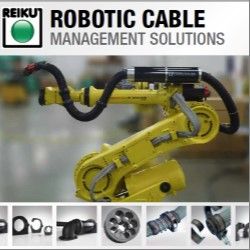Getting Started with Collaborative Robots - Part 2 - How to Identify Potential Processes for Automation
IREX - Meet the Japanese robots that do what humans can't
Getting Started with Collaborative Robots? Part 1 - What can collaborative robots do?
Father of Robotics Joseph F. Engelberger Dies at Age 90
Festo's R&D Timeline - Part 4
Drone giant DJI launches crop-spraying drone
Think You Know Industrial Robots? Think Again
How Universal Robots Doubled Production at Tegra Medical
MIP Robotics Launches Its First Model of New Generation Industrial Robot "MIP Junior",
ABB's largest ever robot is 25 percent faster than competitor robots in high payload range
Robotic Additive Manufacturing Platform for 3D Printing Composite Parts
Crowdfunding Projects For November
Collaborative Robot Applications
UCSD to create robots that see, think and do
Batteries for Robotics Applications
Records 1186 to 1200 of 1960
First | Previous | Next | Last
Industrial Robotics - Featured Product

